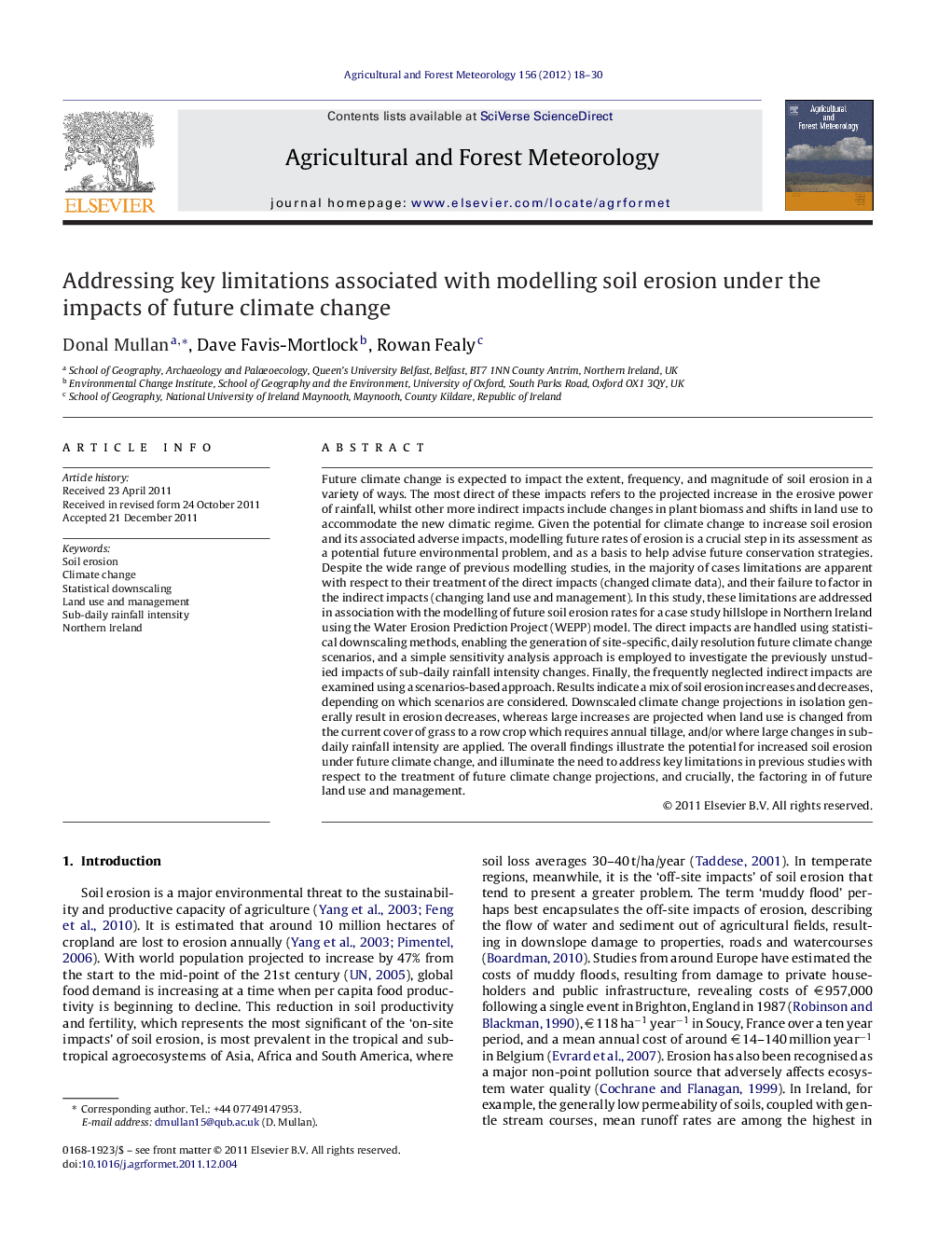| کد مقاله | کد نشریه | سال انتشار | مقاله انگلیسی | نسخه تمام متن |
|---|---|---|---|---|
| 81980 | 158365 | 2012 | 13 صفحه PDF | دانلود رایگان |

Future climate change is expected to impact the extent, frequency, and magnitude of soil erosion in a variety of ways. The most direct of these impacts refers to the projected increase in the erosive power of rainfall, whilst other more indirect impacts include changes in plant biomass and shifts in land use to accommodate the new climatic regime. Given the potential for climate change to increase soil erosion and its associated adverse impacts, modelling future rates of erosion is a crucial step in its assessment as a potential future environmental problem, and as a basis to help advise future conservation strategies. Despite the wide range of previous modelling studies, in the majority of cases limitations are apparent with respect to their treatment of the direct impacts (changed climate data), and their failure to factor in the indirect impacts (changing land use and management). In this study, these limitations are addressed in association with the modelling of future soil erosion rates for a case study hillslope in Northern Ireland using the Water Erosion Prediction Project (WEPP) model. The direct impacts are handled using statistical downscaling methods, enabling the generation of site-specific, daily resolution future climate change scenarios, and a simple sensitivity analysis approach is employed to investigate the previously unstudied impacts of sub-daily rainfall intensity changes. Finally, the frequently neglected indirect impacts are examined using a scenarios-based approach. Results indicate a mix of soil erosion increases and decreases, depending on which scenarios are considered. Downscaled climate change projections in isolation generally result in erosion decreases, whereas large increases are projected when land use is changed from the current cover of grass to a row crop which requires annual tillage, and/or where large changes in sub-daily rainfall intensity are applied. The overall findings illustrate the potential for increased soil erosion under future climate change, and illuminate the need to address key limitations in previous studies with respect to the treatment of future climate change projections, and crucially, the factoring in of future land use and management.
► Future soil erosion rates are modelled for a hillslope in Northern Ireland.
► Limitations in previous studies are highlighted and addressed.
► Climate change alone generally results in decreased erosion.
► Land use found to increase soil erosion rates most.
► Study illuminates the need to address key limitations in previous studies.
Journal: Agricultural and Forest Meteorology - Volume 156, 15 April 2012, Pages 18–30